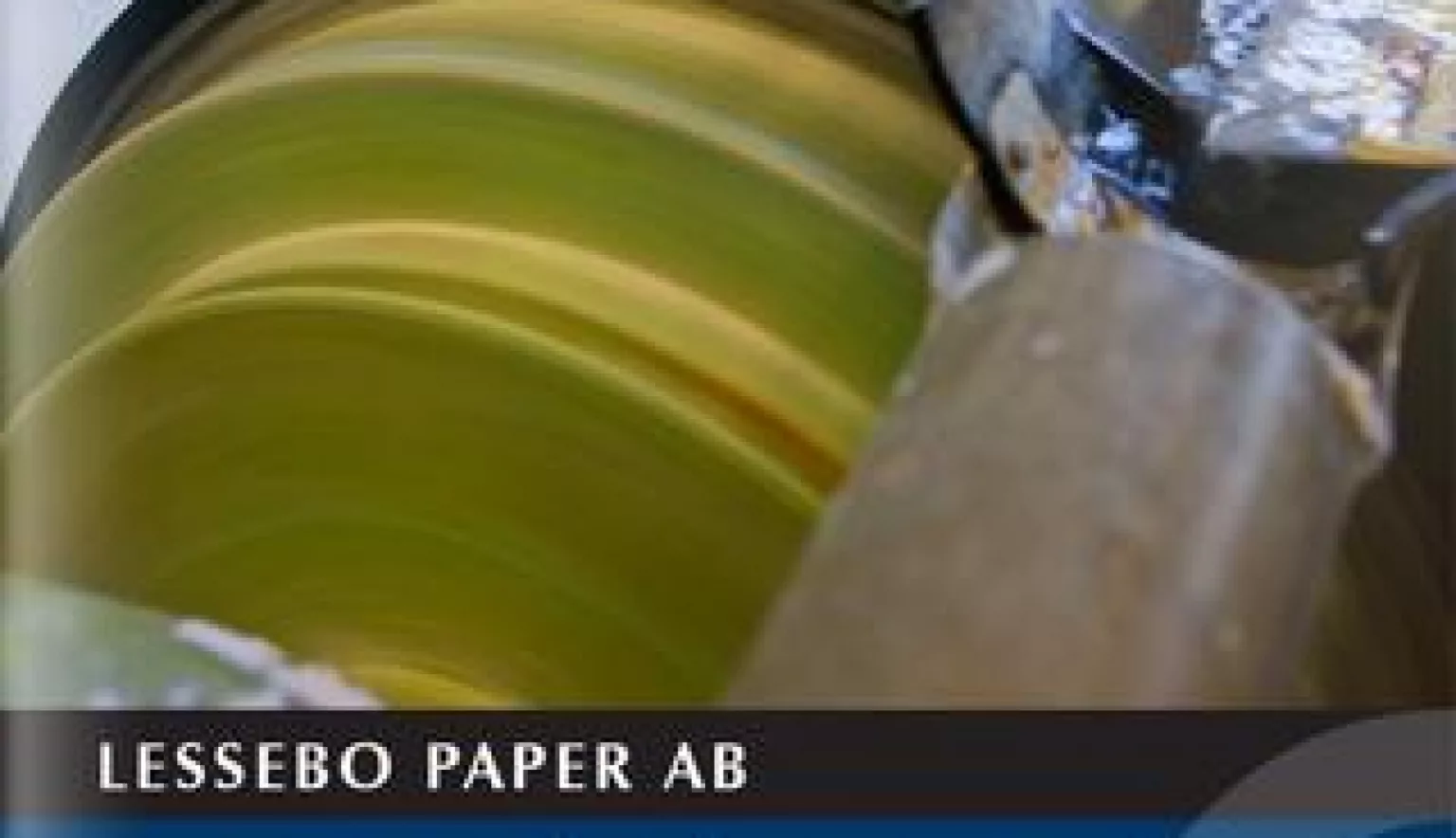Lessebo Paper AB has diversified, expanded and streamlined its production capabilities in recent years to complement a lean internal manufacturing process which forms a resultant offering that continues to surpass larger competitors.
FLEXIBLE ON PAPER AND IN PRACTICE
Under the guidance of Managing Director; Terje Haglund; Chairman, Bo Möller; and Lessebo’s Göran Johansson and Vigo Edberg, the Company has evolved over the course of a rich history to now lead the way in innovation and efficiencies, in order to lead the paper production market across both quality and product variation parameters.
Driving such recent refinements is Lessebo’s continuous commitment to adhering to the most relevant of industry and consumer trends.
Business Development & Strategy Director, Lars Forsberg explains: “The most significant change in industry trends has been the rapid development of digital media and the digital print market.
“As equipment improves to accept a wider range of printing substrates, Lessebo has concentrated on niche areas where superior print results are called for. Lessebo never has, nor ever will be in competition in the commodity market and therefore needs to concentrate in areas where the Company can offer value-add in the premium market.”
This does not preclude having to stay ahead of the industry curve but does ensure the business maintains a product offering tailor-made to complement the volume market with high-end products fit for the embryonic stages of trend changes.
Lessebo Paper’s three paper machines subsequently cater for a range of substances spanning from 70 gsm (grams per square metre) to 350 gsm, produced in so-called jumbo reels that, in turn, are distributed through the production chain in the mill.
“The large jumbo reels firstly go through the winding process where they are rewound into smaller reels,” Forsberg continues. “Sometimes these reels are sold for processing in the printing or packaging industry. A second route is that the reels are taken for sheeting on one of four sheet cutters in the finishing department.
“The reels are sheeted to customer-specific sizes or mill stock sizes; stacked on pallets in bulk, or alternatively passed to the next in-line finishing station – the automatic ream-wrapper – where the sheets are packed in reams, which are stacked on wooden pallets.
“The pallets are then passed onto the final packaging station where the paper is wrapped and secured on the pallets for handing and transport. The reels from the rewinder can also take another route where they are taken to the A4 line for cutting into A4 sheets before being wrapped and boxed for distribution.”
STEEPED IN STORY
All-told, the production capacity of the mill amounts to almost 60,000 tonnes per annum across the three machines, and while these volumes aren’t being reached at present, the potential is there for even more products to be unveiled to its ever-expanding customer base; representing a monumental evolution for a Company that has a development story steeped in industrial history.
“The paper mill started, much like many other paper mills, as an iron mill before the Lessebo iron mill was granted the permission to start a paper mill in 1693,” Forsberg notes. “In 1719 the mill gained formal permission by Kommerskolegium (the equivalent to today’s National Board of Trade) to manufacture paper.
“The mill developed over time and under the auspices of Mr Johan Lorenz Aschan became one of the foremost paper mills in Sweden.”
In 1881, the volume of paper production was as little as 365 metric tonnes, but the Company’s registration as a limited entity five years later, numerous rebrandings throughout the 1900s, and finally an acquisition by a small group of entrepreneurs in 2014 contributed to the Lessebo Paper AB as it is known in the present day.
“[Today], Lessebo Paper AB sells and distributes its paper on a global basis,” Forsberg says. “The main markets are the Nordic region and Europe, with the mill controlling sales to the home market (Nordic region) on a direct basis and represented by agents elsewhere.
“The mill is in contact with equipment manufacturers and has an ongoing quality development programme in place for all printing and packaging processes. All associated commercial partners in the market are industry professionals and report market developments and trends on an ongoing basis to our product development team.”
STRATEGIC OBJECTIVES
The mill itself is naturally the heartbeat of the Company’s current success, but since the acquisition in 2014, great strides have been taken in making it a facility worthy of such industry prominence.
“The first thing we did when we started was to clean it up; to take away a lot of scrap, to get rid of things lying around and to clean up the mill,” recalls the Company’s Mill Manager, Oistein Vedahl. “We made it look very good and can now show how fantastic it is to our customers.
“From a safety perspective, the mill also used to have an average of 15 injuries a year with an absence, but this year we had none. It has been a total turnaround about how we work and how we think when we work.”
The key to all improvements made over the past 24 months has been ‘flexibility’, a driver behind the cost-effectiveness of its operations, the reduction in staff, the automation of its machinery and the streamlining of its supply chain.
And, as Vedahl emphasises, such a small, lean and entrepreneurial structure breeds flexibility. And flexible operations breed an equally flexible product range.
“We have a very wide range which includes 11 shades of white paper and 100 different colours, and we can deliver these in a flexible way that the bigger suppliers can’t,” he says. “With a fourth machine now arriving as well, while we have not filled up the 60,000 tonne capacity yet, we have gone from 27,000 to 40,000 already and will meet the full capacity in time.”
This is naturally the main target for Lessebo Paper AB moving forward, without compromising any levels of quality in the process.
“Our strategy is to continually build upon a rolling programme of business and organisational development,” Forsberg adds. “We will recognise and meet the needs of our markets by the provision of the highest quality in production, the best service offer in the market and continuous product development; all supported by the most competent and committed personnel.
“We will target growth in our market sectors through both existing and new customers; we will guarantee our competitiveness through constant gains in efficiencies; we will achieve solid and sustainable profitability for our owners, customers and clients; and we will always recognise our responsibility to current and future generations for the long-term preservation of both local and global environmental conditions.”
He concludes: “Nothing in any of our strategic objectives will ever be allowed to compromise these responsibilities.”




















